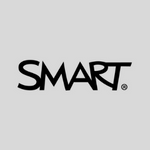Architect Werner Kopatsch, based in Linz, has spearheaded a transformative shift from traditional paper-based workflows to a seamless paperless system. Utilising SMART Board technology has revolutionised construction meetings and planning sessions, enhancing efficiency and collaboration across complex projects while leaving a lasting impression on clients and partners.
Established in 1951, WachbergerBau, a family-owned construction firm headquartered in Linz, Austria, offers comprehensive construction services for both tradespeople and private individuals, specialising in new construction and renovation projects. Owner Werner Kopatsch and his dedicated team approach their work with unwavering passion, creativity, and attention to detail, ensuring the successful execution of every project.
Kopatsch has found that the SMART Board in conjunction with SMART Meeting Pro supports them by making construction meetings and planning even more efficient.
Visualising complex construction plans
The adoption of SMART solutions, particularly the SMART Board in conjunction with SMART Meeting Pro, has proven indispensable in optimising construction meetings and planning processes for Kopatsch and his team. "Complex tasks are inherent to our daily operations," Kopatsch explains. "Effective planning, coordination, and innovative problem-solving are pivotal aspects of our discussions."
In 2018, Kopatsch made the strategic decision to transition his office from paper-based to paperless operations, leading him to discover SMART solutions. The integration of SMART displays has significantly simplified their workflow, allowing for real-time presentation and editing of construction plans, directly on the display.
The power of SMART Ink facilitates seamless collaboration, enabling builders, planners, and engineers to annotate plans digitally, with changes instantly reflected in the documents and effortlessly shared among colleagues. This feature proved pivotal in Kopatsch's decision to opt for SMART technology over alternative interactive displays.
The SMART Board has become the centrepiece of their paperless office, serving as a hub for collaborative discussions and real-time document editing. The ability to make changes directly and distribute them as PDFs in real time is invaluable for business leaders.
“The SMART Board makes it so much easier. Sometimes we’d be working with plumbers, electricians and floor layers all at once. In the past, we had to print out the plan for each participant in the construction meeting, then incorporate the drawn-in changes, print them out again, and distribute them. Now we're working together on the SMART Board and the changes are adopted into the docs immediately, so less paper and more time.”
Direct integration of the SMART Board with employees' computers has further streamlined communication and coordination, allowing planners to engage directly with clients, saving considerable time previously spent on scheduling meetings and manual document exchange.
In addition to facilitating 2D plan presentations, the SMART Board's capacity to showcase 3D building views enhances teamwork and communication among stakeholders, including building owners and on-site contractors such as plumbers and electricians. This streamlined approach has drastically reduced paper consumption, exemplified by Kopatsch's reduction from 30,000 to 7,000 paper copies annually.
Gaining buy-in from employees, partners, and customers
The adoption of SMART technology has garnered widespread enthusiasm among WachbergerBau's architects, clients, and partners, with many expressing admiration for its capabilities. Kopatsch emphasises the transformative impact on productivity and cost-efficiency, highlighting the seamless integration of common architecture software solutions with the SMART display, ensuring consistency and effectiveness in project management.
“We used to have to schedule a meeting, then the client had to come over, we drew around in the paper plan, copied, sent it, and so on. All of this can now be done in one go.”Explore more inspiring stories featuring organisations that have found success with interactivity:


